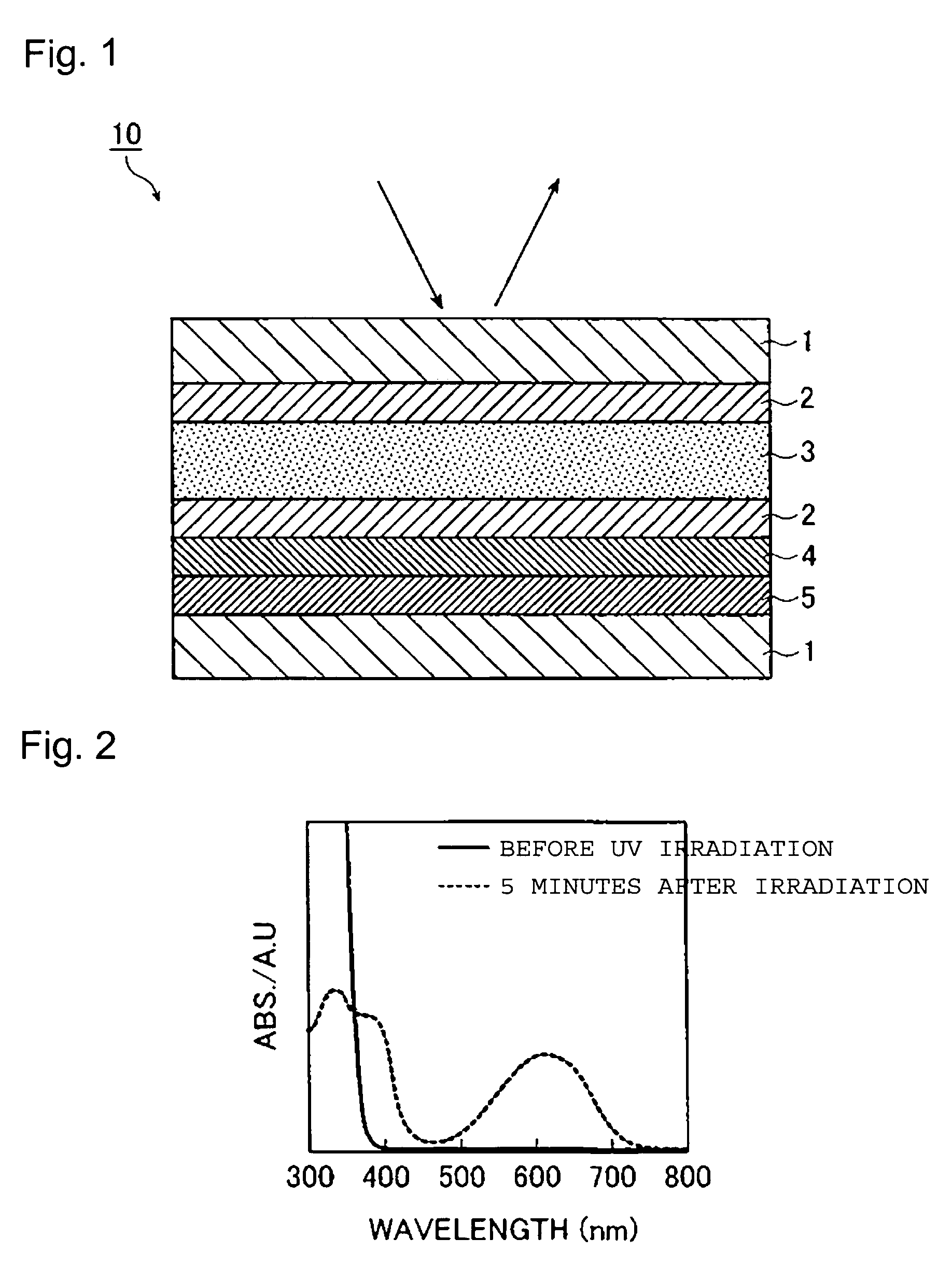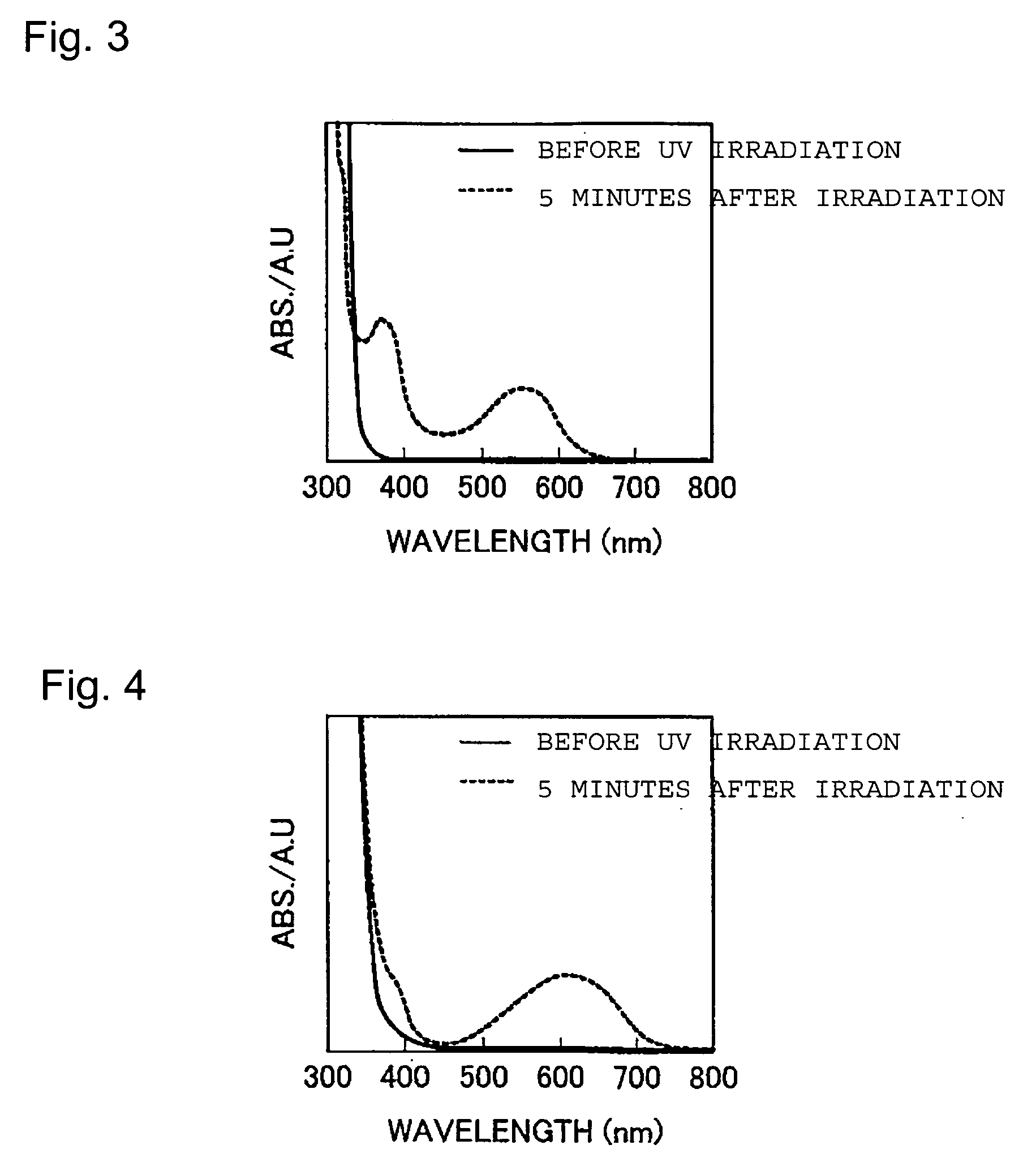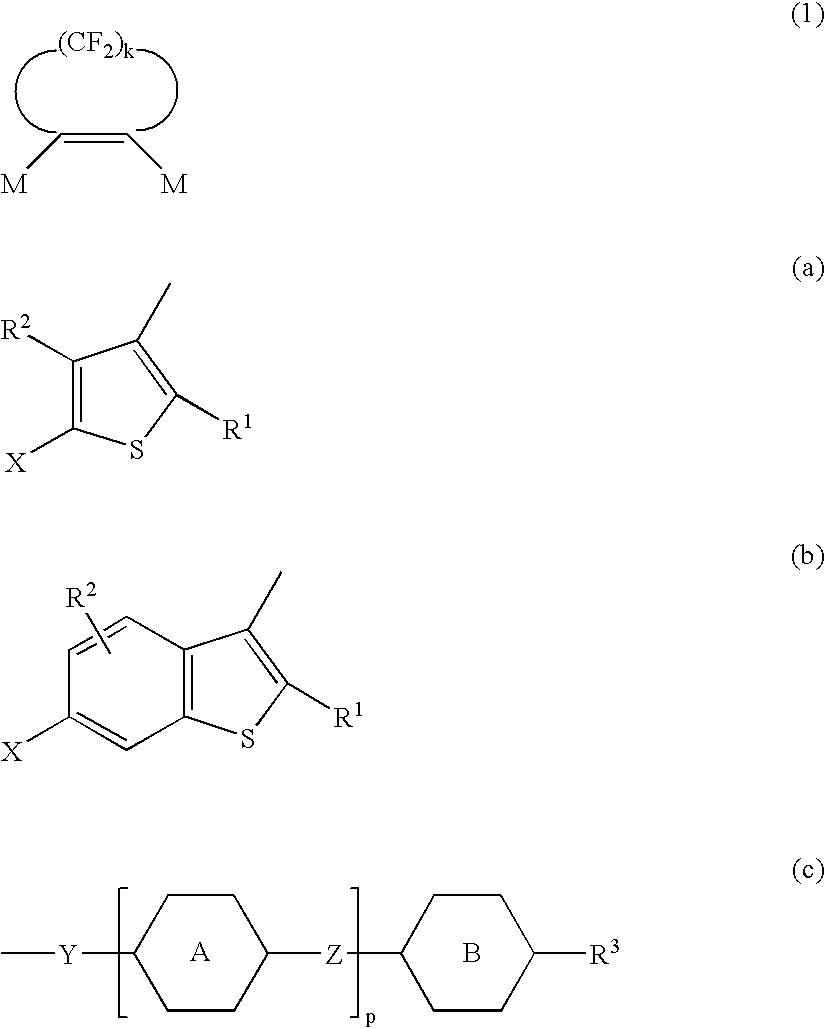Optical recording material
a technology of optical recording material and diarylethene, which is applied in the field of diarylethene, can solve the problems of low thermal irreversibility, no more providing photochromic properties, and low durability, and achieve the effect of high durability
- Summary
- Abstract
- Description
- Claims
- Application Information
AI Technical Summary
Benefits of technology
Problems solved by technology
Method used
Image
Examples
preparation example 1
(1) Preparation of 3,5-dibromo-2-methylthiophene (Compound I-1)
[0064] Into a 1,000 ml four-necked flask, 25.4 g (0.258 mol) of 2-methylthiophene and 300 ml of acetic acid were added, and the temperature was kept at 0° C. by ice bath. Then, 82.5 g (0.516 mol) of bromine was slowly dropped from a dropping funnel, and after the dropping, 20 ml of acetic acid was further added to wash the dropping funnel. Stirring was carried out for 30 minutes while keeping the temperature at 0° C., and then the ice bath was removed, and stirring was carried out overnight while the temperature was recovered to room temperature. The solution was neutralized with sodium carbonate, a sodium thiosulfate aqueous solution was added, extraction with ether was carried out, and the ether phase was washed with a saline solution and dried over magnesium sulfate. Magnesium sulfate was removed by filtration, and ether was distilled off. The resulting product was eluted with hexane and a component of Rf=0.83 was i...
preparation example 2
(1) Preparation of [4-(4-bromo-5-methyl-thiophen-2-yl)-phenyl]dimethylamine (Compound II-1)
[0074] Into a 500 ml three-necked flask, 10.0 g (45.3 mmol) of the above obtained compound I-2, 70 ml of tetrahydrofuran, 70 ml of a sodium carbonate aqueous solution (20 mass %), 16.8 g (68.0 mmol) of (4-iodophenyl)-dimethylamine and 2.36 g of tetrakis(triphenylphosphine)palladium(0) were added, followed by reflux under heating at 70° C. for 2.5 hours in an argon atmosphere. Then, the temperature was recovered to room temperature, extraction with ether was carried out, and the ether phase was washed with a saturated sodium hydrogen carbonate aqueous solution and water and then dried over magnesium sulfate. Magnesium sulfate was removed by filtration, and ether was distilled off. The resulting product was eluted and separated with hexane by means of a silica gel column, followed by recrystallization to obtain compound II-1. The amount of the compound II-1 was 7.7 g, the yield was 57.6 mass %...
preparation example 3
(1) Preparation of 2-methylbenzothiophene (Compound III-1)
[0078] In a 1,000 ml three-necked flask, 25.0 g (186.5 mmol) of benzothiophene and 500 ml of tetrahydrofuran were added, and while keeping the temperature at −60° C. or below, 75.0 ml (195.0 mmol) of 2.6 N n-butyl lithium were slowly dropped drop by drop. Then, the dropping funnel was washed with 30 ml of tetrahydrofuran, followed by stirring for 30 minutes. While keeping the temperature at −60° C. or below, 14.3 ml (230.0 mmol) of methyl iodide was slowly dropped. After stirring for 1 hour, methanol was added while the temperature was recovered to room temperature. After reaction, the resulting reaction solution was poured in 150 ml of a saturated sodium thiosulfate aqueous solution, extraction with 300 ml of diethyl ether was carried out three times, and the ether phase was washed and dried, and then the solvent was distilled off under reduced pressure. The obtained reaction product was purified by silica gel column chrom...
PUM
 Login to View More
Login to View More Abstract
Description
Claims
Application Information
 Login to View More
Login to View More - R&D
- Intellectual Property
- Life Sciences
- Materials
- Tech Scout
- Unparalleled Data Quality
- Higher Quality Content
- 60% Fewer Hallucinations
Browse by: Latest US Patents, China's latest patents, Technical Efficacy Thesaurus, Application Domain, Technology Topic, Popular Technical Reports.
© 2025 PatSnap. All rights reserved.Legal|Privacy policy|Modern Slavery Act Transparency Statement|Sitemap|About US| Contact US: help@patsnap.com



